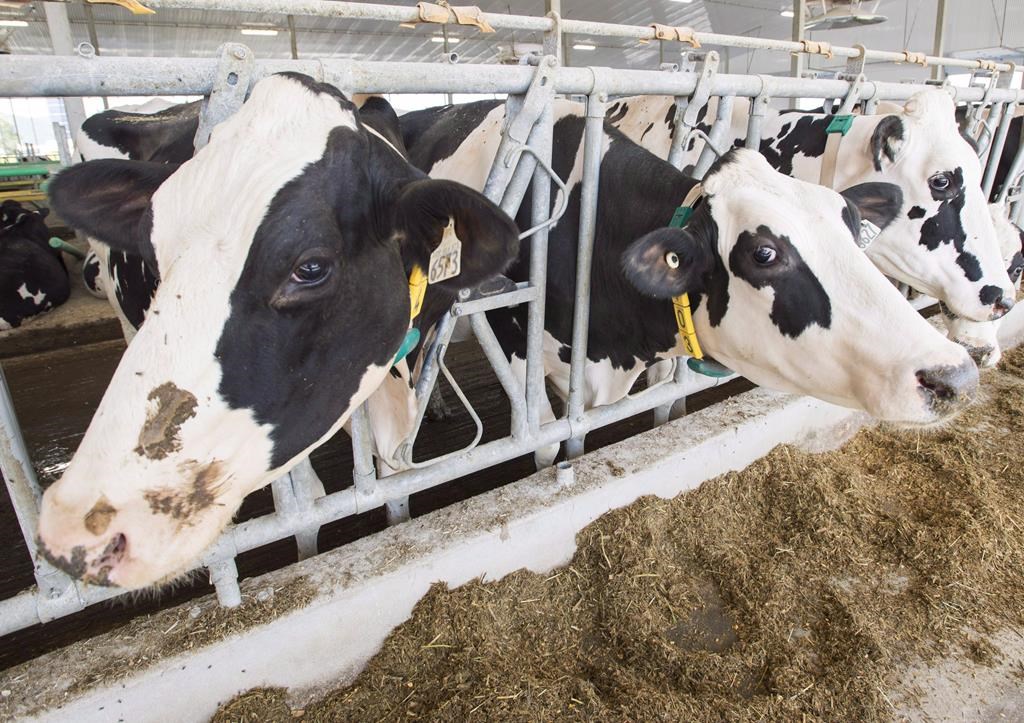TSX dips on real estate and financials; Wall Street mixed after holiday
Posted May 31, 2016 11:29 am.
Last Updated May 31, 2016 5:54 pm.
This article is more than 5 years old.
TORONTO – The Toronto stock market chalked up a small loss Tuesday amid declines in real estate and financial stocks, along with a retreat in oil prices.
The S&P/TSX composite index pulled back 20.89 points to 14,065.78 as the July contract for North American benchmark crude fell 23 cents to US$49.10 a barrel.
Crude prices have enjoyed a rally in recent weeks with global production slowing for various reasons, including the massive wildfires near Fort McMurray, Alta.
After settling as low as US$26.21 a barrel in February, West Texas Intermediate crude now is flirting with the US$50-a-barrel mark.
“It seems to be a psychological hurdle for it to get over $50,” Ian Riach, a portfolio manager at Franklin Templeton Investments, said of Tuesday’s pullback.
“I think if oil does get over $50 and a couple of dollars more, and then does stay around there, as opposed to seeing some of the violent swings we did see earlier this year… that would be a much better pricing environment for the exploration and production companies in North America.”
Meanwhile, the Canadian dollar, which closely follows oil prices, was down for a third consecutive session. The loonie dipped 0.34 of a U.S. cent to 76.28 cents US.
Elsewhere in commodities, July natural gas shot up 12 cents to US$2.29 per mmBtu, while August gold was up 80 cents at US$1,217.50 a troy ounce. July copper gave back two cents to US$2.10 a pound.
In New York, indexes were mixed despite positive reports on consumer spending and housing as traders returned following the U.S. Memorial Day holiday.
The Dow Jones industrials was down 86.02 points at 17,787.20, while the broader S&P 500 shed 2.10 points to 2,096.96. The tech-heavy Nasdaq enjoyed a modest increase, up 14.54 points at 4,948.05.
In economic news, the Commerce Department said U.S. consumer spending rose one per cent in April, the biggest increase in six years, while wages and salaries, the most important component of incomes, gained 0.5 per cent.
Meanwhile, Standard & Poor’s/Case-Shiller home price index rose 5.4 per cent in March, keeping pace with February’s increase, although very few homes were on the market.
Although the report points to signs of moderate growth, Riach doesn’t think the data is strong enough to prompt the U.S. Federal Reserve into hike interest rates sooner rather than later.
“There is still a tug of war going on about what is good and bad,” he said.
The Fed raised its key policy rate for the first time in nearly a decade in December, pushing the rate from a record low near zero to a range of 0.25 per cent to 0.5 per cent.
— With a file from The Associated Press
Follow @LindaNguyenTO on Twitter.
Note to readers: This is a corrected story: A previous version had incorrect figures for the Dow and S&P 500










